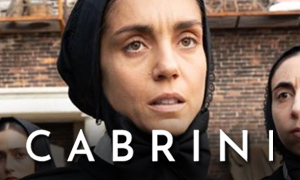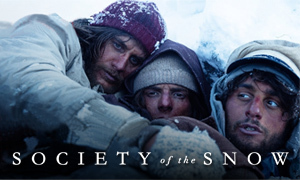The Man Who Invented Christmas: History vs. Hollywood
| REEL FACE: | REAL FACE: |
Dan Stevens
Born: October 10, 1982 Birthplace: Croydon, Surrey, England, UK | Charles Dickens
Born: February 7, 1812 Birthplace: Landport, Hampshire, England, UK Death: June 9, 1870, Higham, Kent, England, UK (stroke) Sketched in 1842 |
Morfydd Clark
Birthplace: Sweden | Catherine "Kate" Dickens
Born: May 19, 1815 Birthplace: Edinburgh, Scotland, UK Death: November 22, 1879, London, England, UK (cancer) Relationship: Wife Sketched in 1838 |
Jonathan Pryce
Born: June 1, 1947 Birthplace: Holywell, Flintshire, Wales, UK | John Dickens
Born: August 21, 1785 Death: March 31, 1851 (urethral infection) Relationship: Father |
Ger Ryan
Birthplace: Ireland | Elizabeth Dickens
Born: December 21, 1789 Death: September 13, 1863 Relationship: Mother |
Simon Callow
Born: June 13, 1949 Birthplace: London, England, UK | John Leech
Born: August 29, 1817 Birthplace: London, England, UK Death: October 29, 1864, London, England, UK Relationship: Illustrator |
Justin Edwards
Born: 1972 Birthplace: Stratford-upon-Avon, Warwickshire, England, UK | John Forster
Born: April 2, 1812 Birthplace: Newcastle upon Tyne, England, UK Death: February 2, 1876 Relationship: Friend |
Ian McNeice
Born: October 2, 1950 Birthplace: Basingstoke, Hampshire, England, UK | Edward Chapman
Born: January 13, 1804 Death: February 1880, Elm Lodge, Hitchin, England, UK Relationship: Co-Founder of Chapman & Hall, Publishers |
Did Charles Dickens's father really end up in debtors' prison when Charles was a boy?
Yes. When Charles Dickens was 12 years old, his financially irresponsible father, John Dickens, was forced by his creditors to go to the Marshalsea debtors' prison in Southwark, London. Charles's mother and younger siblings joined him there while Charles went to stay with Elizabeth Roylance, an impoverished elderly friend of the family who lived in Camden Town. John Dickens was released from debtors' prison roughly three months later after his paternal grandmother died and left him £450, which gave him the means to pay his creditors.
The Man Who Invented Christmas true story reveals that John Dickens financial troubles didn't end when he was released from debtor's prison. After his son Charles found success as a writer, John would often go to Charles's publishers asking for loans. Eventually, Charles moved his parents away from London to the country, but his father still sent messages to his son's publishers asking for money. They moved back to London after a short time.
What was Charles Dickens's first story ever published?
After embarking on a career as a reporter, in 1833 Dickens submitted his first story, "A Dinner at Poplar Walk," to The Monthly Magazine , a London periodical. He longed for fame and had decided to write a story after he had yet to find success as an actor. A decade of writing later, he would pen A Christmas Carol in 1843 at age 31.
How did Charles Dickens meet his wife Catherine?
In researching the accuracy of The Man Who Invented Christmas, we learned that Charles Dickens met Catherine Hogarth in 1835. At the time, he was working mostly as a political journalist for the Morning Chronicle, a London newspaper. Catherine's father, George Hogarth, was the paper's music critic and editor of the recently launched evening edition, aptly titled the Evening Chronicle. He asked Dickens to contribute Street Sketches. As they worked together, Dickens became a regular visitor to George's Fulham house. Dickens liked visiting because George was friends with Walter Scott, a novelist and hero of Dickens's. He also liked the company of George's three daughters, Georgina, Mary, and Catherine, 19.
How many children did Charles Dickens and his wife Catherine have?
In exploring The Man Who Invented Christmas true story, we learned that Charles and Catherine Dickens had a total of ten children, with the first, Charley, born in January 1837. Catherine was pregnant with their fifth child while Charles was writing A Christmas Carol.
Did Charles Dickens really have a number of flops before publishing A Christmas Carol?
Yes. At the time he was writing A Christmas Carol in 1843, his previous works were not earning much. He hadn't had a hit since 1838's Oliver Twist. He was overspending and struggling to make ends meet. One of his most popular literary failures was his historical novel Barnaby Rudge: A Tale of the Riots of Eighty, which was published in his 1840-1841 weekly serial Master Humphrey's Clock. Edgar Allan Poe wrote a less-than flattering review of the novel for Graham's Magazine, saying that the raven in Barnaby Rudge should have been more symbolic in meaning. Ironically, Grip the raven is what inspired Poe to pen his most well-known poem, "The Raven."
Did observing the poor inspire Dickens to write A Christmas Carol?
Yes. During a visit to Manchester, Dickens observed the manufacturing workers and their squalid living conditions. What he saw helped inspire his idea for A Christmas Carol. Also helping to shape the story was what he had witnessed at the Field Lane Ragged School, one of several charitable institutions that provided free education to Britain's most destitute children. Teachers in ragged schools were mostly volunteers who worked in the poorest districts, holding class in lofts, stables, and railway arches if they had to. In writing A Christmas Carol, Dickens hoped to "strike a sledge hammer blow" for the poor. To make the novel more accessible to the masses, he reduced the price to just five shillings.
We can't forget that Dickens's own life was a huge inspiration for the novel as well. When Dickens was 10 years old, he had to leave school because his parents could no longer afford the relatively inexpensive fees. He went to London to work in a blacking factory where they made polish for various metal surfaces. He hated the fumes and harsh conditions of the factory, where he was often bullied by his coworkers. To learn more about Dickens's struggles and how he strived to make his stories fun while being a voice for social reform, watch this short Charles Dickens documentary.
Did Dickens really become obsessed with writing A Christmas Carol?
Yes. Like in the movie, he was often swept up in the emotion of the story as it unfolded. Dickens wrote that he "wept and laughed, and wept again" as he "walked about the back streets of London fifteen or twenty miles many a night when all sober folks had gone to bed."
Where did the filmmakers get their information from?
The movie is based on Les Standiford's 2008 non-fiction book The Man Who Invented Christmas: How Charles Dickens's A Christmas Carol Rescued His Career and Revived Our Holiday Spirits. The book traces the writing and enduring legacy of Dickens's classic Christmas story, including its significant influence on the holiday as we know it today. Included in the revised version of the New York Times Best-Seller is Charles Dickens's iconic story A Christmas Carol.
Did Charles Dickens really write A Christmas Carol in just six weeks?
Yes. As we checked the accuracy of The Man Who Invented Christmas, we confirmed that, like in the movie, he wrote the novel in a desperate frenzy, knowing it needed to be released before Christmas. His financial problems also contributed to his haste, and he finished the book in just six weeks.
Did many of the people in Dickens's life provide the inspiration for his characters?
Yes. Like Christopher Plummer's role as the fictional Scrooge, who in the film is inspired by the rich, grumpy old man who Dickens hears exclaiming, "Humbug!", it is well known that many of Dickens's characters were inspired by people in his life. For example, his first love, Maria Beadnell, is thought to have inspired the character Dora in his semi-autobiographical novel David Copperfield. His wife Catherine's younger sister Mary was the basis for Rose Maylie in Oliver Twist. He depicted his father, John Dickens, in the character of Wilkins Micawber in David Copperfield. As for Scrooge, the character is believed to have been inspired by several people, most notably the eccentric miserly moneylender John Elwes.
Did Charles Dickens really claim to be visited by the spirits of his characters as he wrote?
Yes. Similar to Scrooge in the story, Dickens claimed that the characters he invented would haunt his waking hours, and in many ways tell him what to write. However, the movie takes this quite literally and mimics the story he is creating by turning his characters into actual spirits that provide him with his ideas. This bit of fiction seems to somewhat detract from Dickens's genius as a writer, implying that his ideas were not of his own accord. In the least, Dickens did comment that the characters in his stories were more real to him than the people in his life.
Did Charles Dickens really self-publish A Christmas Carol?
Yes. Dickens was frustrated with his publishers, Chapman and Hall, over how little money he had made from his recent book Martin Chuzzlewit. With a mortgage payment due and a fifth child on the way, Dickens decided to self-publish A Christmas Carol. The book endured production problems and ended up costing him more than he'd anticipated, which diminished his initial profits. It was released during the Christmas season of 1843, December 19 to be exact, and the initial run of 6,000 copies sold out by Christmas Eve. Despite his first printing selling out, he earned only £137 of an expected £1000. -Mental Floss
Did the publication of Charles Dickens's A Christmas Carol really help to "invent" Christmas?
The novel was a huge success and while it did help to invent some new traditions around Christmas, it mainly helped to revive the traditions and enthusiasm for Christmas, which had been in decline prior to the Oxford Movement of the Victorian era. In the movie, when Dickens goes to his publishers with his idea for the book, they tell him that Christmas is but a "minor holiday," a point that is largely accurate for the time, though the movie misses the fact that celebrating the Christmas season had already been growing in popularity prior to A Christmas Carol, which helped to cement the movement. For example, Queen Victoria and Prince Albert had helped to popularize the use of the Christmas tree in homes, which had been introduced in Britain in the 18th century.
As it helped to revive Christmas, the book was also influential in inspiring various seasonal foods, including turkey and mashed potatoes, and it promoted the notion of family gatherings, games and festivities. It popularized the use of the existing term "Merry Christmas," which can be traced back to the 1500s. It helped to define the spirit of Christmas, with an emphasis on joy and charity instead of wealth and material things. Terms like "Tiny Tim" and "Scrooge," which originated from the book, emphasize these contrasting meanings of Christmas and are still widely used today. In addition, A Christmas Carol has permeated popular culture, inspiring many movies and stories.
Did Charles Dickens and his wife Catherine stay together until his death in 1870?
No. In 1857, Dickens fell in love with Ellen Ternan, one of the professional actresses he had hired to star in the play The Frozen Deep, written by Dickens and Wilkie Collins, his protégé. Ellen, 19, was 27 years his junior. Dickens and Catherine separated but did not divorce, as it was still unthinkable for someone that famous. His passion for Ellen is said to have lasted up until his death, but the extent of their affair is not known, since Ellen destroyed all of their correspondence in a bonfire, with Dickens destroying many of his personal letters in the fire too, sparing only business letters.
Was A Christmas Carol Dickens's only Christmas novel?
No. He followed 1843's A Christmas Carol with four other Christmas stories, The Chimes (1844), The Cricket on the Hearth (1845), The Battle of Life (1846), and The Haunted Man and the Ghost's Bargain (1848).
Charles Dickens Documentary & Related Videos
Broaden your knowledge of The Man Who Invented Christmas true story by watching the short documentary below.
Link-to-Learn More:







